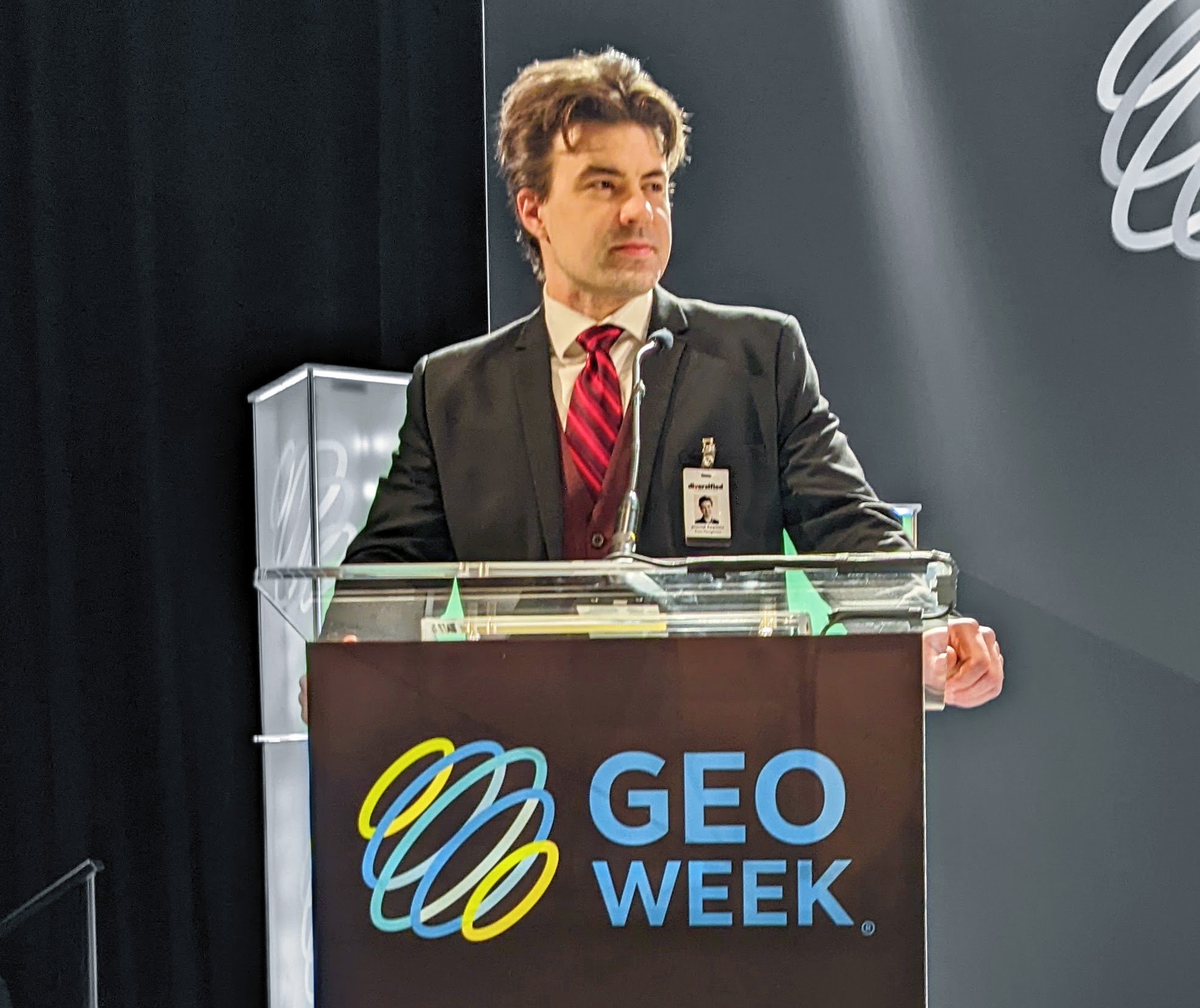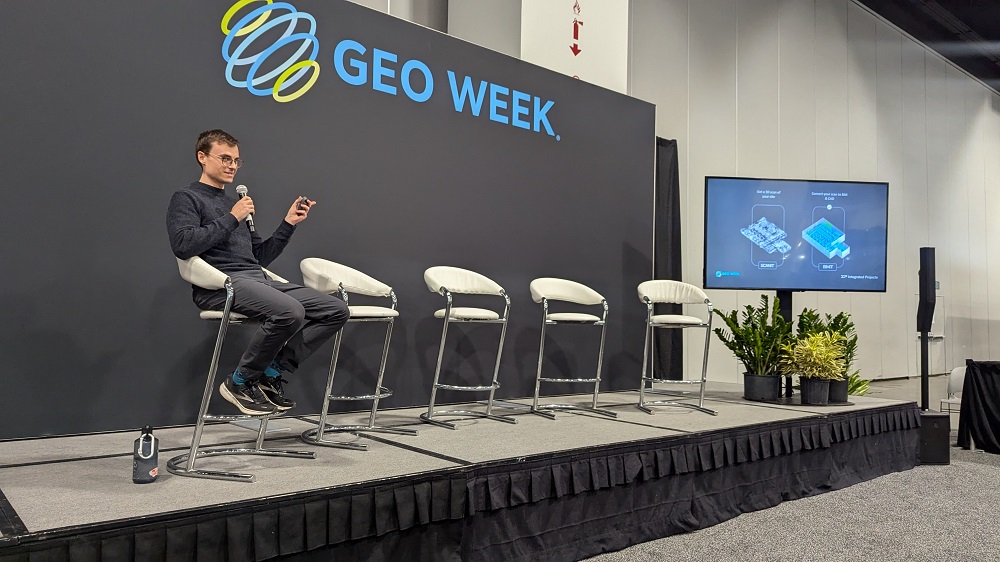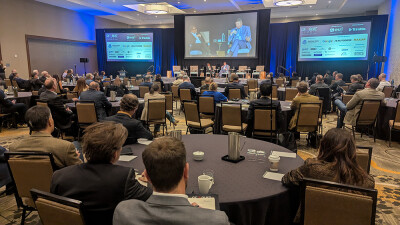Will ChatGPT change how we think about creating, accessing and leveraging mapping products?
That question was the focus of a Geo Week 2025 session, highlighting the many different considerations that mapping professionals should be thinking about with large language models (LLMs) like ChatGPT that have already upended entire professions. It’s one that Thomas Czerniawski is thinking about in ways that could prove to be especially instructive.
“The prompt field that you see in ChatGPT is just a hint at what’s really there,” he told the crowd. “There’s so much more that can be done with this tool.”
Czerniawski has over 10 years of experience in computer vision, artificial intelligence, and digital modeling of the built environment. He has a PhD in Civil Engineering from the University of Texas at Austin, where his research program focused on creating digital models of existing facilities using deep learning. These deep learning models are linked to the history of mapping itself, as Czerniawski noted their connection to the early cartographic efforts that gave rise to the very first maps.
No matter the era or tools, mapping assets of all types and sizes can fit under a larger category that can be defined as similarity maps. These similarity maps can then be visually grouped together to create larger datasets that can be especially simple or complex, but highlight what it looks like to enable connections that are otherwise never made. Think of the difference between a staff directory listing versus a similarity map of that same directory, which could connects people across departments or areas of focus.
These are the types of connections that are the driving force underneath LLMs. They represent a totally new way to organize information.
Czerniawski talked about how this shift could end up being fundamental to the way people ingest information, similar to how early dictionaries explained what it meant to organize words alphabetically. It was a totally new way to think about and organize information that mirrors what we’re seeing today.
“I think we’re in a similar time because there’s just too much to know,” Czerniawski said. “How else are you going to navigate millions of pieces of information?”
That navigation is going to depend on how individuals and entire industries utilize LLMs. Right now, ChatGPT can summarize long reports into a couple paragraphs, but can also do the inverse. However, there are gaps in terms of the depth and breadth of this info that geospatial professionals can find lacking. But what if an LLM could be trained on a company's internal workflows and protocols, enabling the creation of summaries and reports that not only utilize but specifically rely on info that isn’t widely available? Those algorithms exist, and they're only going to get better and more accessible.
For Czerniawski, that accessibility will result in the creation of similarity maps that are foundational to those more specific summaries and reports, but it’s just the beginning. He connected where we are today with the technology to the early days of mapping.
When those first cartographers set sail, they were risk-averse, with small ships and small crews, and knowledge-sharing was limited. But as those efforts were successful, more and more were undertaken, everything grew. It’s going to be the same with LLMs that similarly unlock whole new worlds.
“It’s going to change everything,” Czerniawski said. “Right now, you’re only letting your most skilled employees play with the tools but the maps and value that are being created will further open things up. You’re going to see a greater willingness to take on risk and that’s going to push things beyond anything we can think of today.”




.jpg.small.400x400.jpg)

